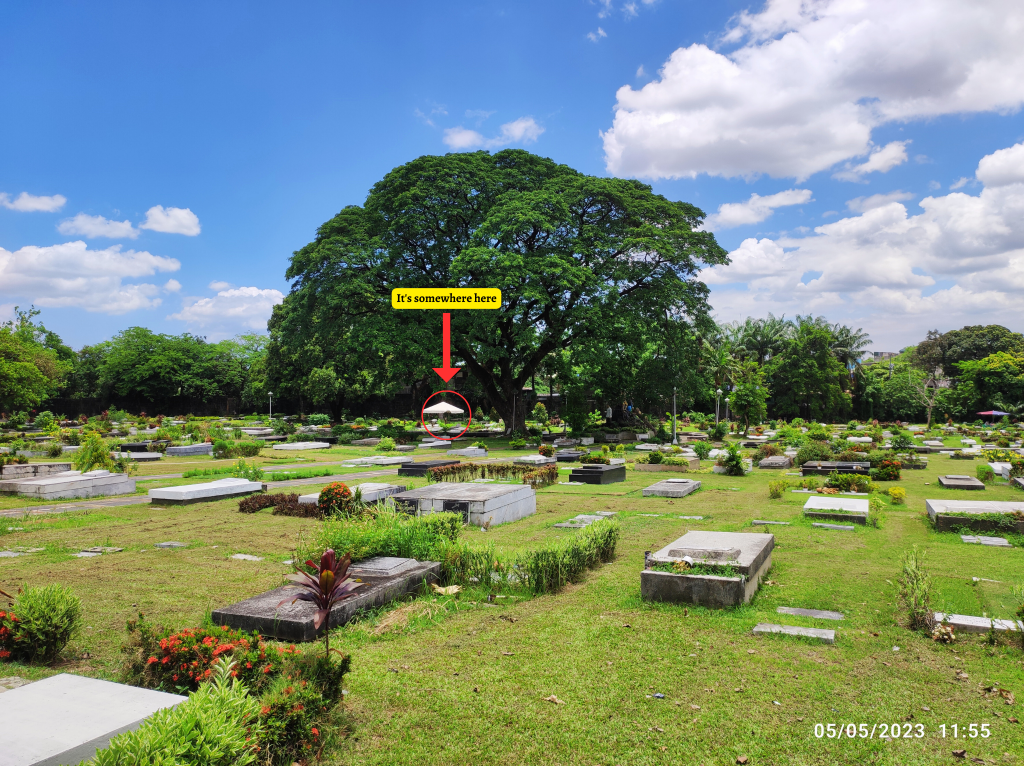In honor of José Monserrat Maceda (1917-2004), National Artist for Music.
During the UPCE General Staff Meeting, our administrative officer, Sol Maris Trinidad, brought up visiting Dr. José Maceda’s grave on his death anniversary. We were asked if anyone wanted to tag along with her. So at noon of the 5th of May, some members of the UP Center for Ethnomusicology Staff departed for Himlayang Pilipino.

After a quick stop to buy some candles and flowers, we finally arrived at the cemetery. Dr. Maceda’s grave is located near the statue tributing Francisco Balagtas’ Florante at Laura. Ms. Sol, as I fondly call her, encouraged us to roam a bit to discover where the actual plot was.
The site was first located by our Archives Student Assistant, Oey Mirabueno. It is a rather unassuming spot. It was not a fancy tomb; there were no statues to indicate that a National Artist laid there; no epitaphs to commemorate his works and contribution.
What it was, however, was a plot of land with shrubbery maintained in the shape of an “M” with 2 headstones, for him and for his wife Madelyn. His headstone is only inscribed with his memorable name, his productive time on earth, and his honorable title, “National Artist, Music.”

The modest arrangement of Dr. Maceda’s burial site brought to my mind the quote used in the 2013 exhibit of his works, Listen To My Music. He said this in an interview in 2003 with Rodolfo Silvestre for the Sunday Inquirer Magazine:
“The man behind the music does not matter. If you want to honor me, listen to my music.”
José Monserrat Maceda (1917-2004), National Artist for Music
To me, his words do not downplay the man behind the work, but rather, emphasizes the work itself and how in its continued use and appreciation is a much more enduring honor; so much more than the accolades, the distinctions, or the awards that the man has gained throughout his lifetime.
This simple tomb was the perfect expression of his wisdom. Buried here is the man, but his works, his legacy, continues on through his monumental contribution to ethnomusicology and Philippine music, all housed in the Center which he founded. Today, his music is still heard, still performed, even years after his passing.

I returned to our office spiritually content, and physically full. It was a rather heavy lunch both literally and figuratively.



